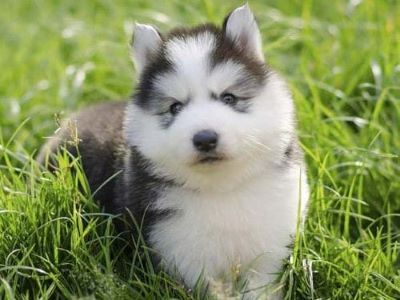Dogs have been our loyal companions for centuries📅 but Have you ever wondered what makes each dog so special? The answer lies in the curious world of genes, where the key players are chromosomes. So, “How Many Chromosomes Do Dogs Have?”

Chromosomes are the building blocks of life, this solves the puzzle🧩 of different breeds and their issues. So, let’s look under the microscope to make our furry friend’s life more easy!
Key Takeaways
- DNA is like an instruction manual inside dogs that makes each dog unique.
- DNA🧬 contains genes which are coded for building parts of the dog’s body.
- Chromosomes are bundles of DNA found in cells.
- Dogs have 39 chromosome pairs for a total of 78 chromosomes.
- When dogs mate, their DNA combines to create puppies with a mix of traits from the parents.
How Many Chromosomes Do Dogs Have?
Chromosomes carry genetic information in the cells of an organism. Dogs typically have 39 pairs of chromosomes, giving them a total of 78 chromosomes.
This might sound like a lot, but let’s break it down further to understand how this genetic arrangement functions. In the case of dogs, they’re like the instruction manuals🧾 of the features, tiny strings inside cells that carry instructions for building your body, like eye colour and height.
“Dogs, like humans, inherit one set of chromosomes from each parent.👪 This means that they possess two copies of each chromosome – one from the mother and one from the father“, confirms Krista Williams at VCA Hospitals.
These paired chromosomes are called homologous chromosomes. While the typical dog has 39 pairs of chromosomes, it’s important to note that variations can occur. Certain dog breeds may have slight variations in their chromosome numbers due to specific genetic🧬 features.

Fortunately, these differences are usually small and don’t have a big impact on the dog’s health or behaviour. Genes provide the instructions for creating proteins, and these proteins determine everything from a dog’s appearance, like coat colour and size[1], to their internal functions, such as metabolism.
This process makes each dog unique and is the reason we see a wide variety of breeds and individual traits. It’s also why puppies can share similarities with their parents in different factors.
Chromosomes, DNA, and Genes: How They Work
Chromosomes in dogs are like recipe books for their traits. Most dogs have 39 pairs of chromosomes. These books contain genes🧬, which are instructions for their characteristics, like fur colour and size.
When dogs have puppies🐶, the new generation gets a mix of chromosomes from their parents, shaping their essence.
DNA and Genes
A dog’s DNA🧬 is like its instruction manual for life, making each dog unique. DNA, or Deoxyribonucleic Acid, is a long, twisty recipe book inside a dog’s cells with instructions for everything about the dog.
This DNA book🧬📖 has chapters called “genes” – sets of instructions for traits. Genes are like recipes, telling the dog’s body how to make important proteins that build and run its body.
One gene may determine fur colour, another controls height, and some influence personality. For example, one gene makes the dog’s hair black or brown.

Each gene is like a recipe in that book. When a gene is read, it tells the cell how to make a specific thing, like a protein[2]. These proteins do the work in the dog’s body, like helping it grow, stay healthy, and move around.
When two dogs mate, their DNA mixes together. This blending of genetic recipes creates new puppies with a mix of traits from both parents. That’s why puppies🐶 often resemble their mum and dad.
Can the Number of Chromosomes Change in Dogs?
The number of chromosomes in dogs typically remains consistent.📊 Most dogs have 39 pairs of chromosomes, for a total of 78.
However, in rare cases, genetic mutations or specific breeds may have slight variations, but these usually don't significantly affect the dog's health or behaviour❤️🩹. Generally, chromosome numbers stay stable in the dog population.

How Does a Dog DNA Test Work?
Dog DNA tests help us understand our dogs better, just like how a book helps us learn about a story. It’s like decoding🔍 the secrets hidden in your dog’s genes, let’s understand in detail:
- To begin, a small sample of a dog’s DNA is collected. This can be done with a cheek swab, where you gently rub a special cotton swab inside your dog’s cheek.
- The DNA from the cheek swab is isolated. This means the DNA is separated from other stuff in the cheek cells so we can study it.📗
- Sometimes, we need to make more copies of the DNA to study it better. It’s like photocopying a page from a book. This is done with a special machine.
- We look closely at the DNA. It’s a bit like solving a puzzle.🧩We compare the DNA we found with known information to figure out things about your dog, like their breed, health, or ancestry.
- We take what we learned from studying your dog’s DNA to give you insights about your dog.
Lastly, we give you a report that explains what we found in your dog’s DNA. It’s like getting a special book that tells you more about your dog!📘🐶
FAQs
1. Do All Dog Breeds Have the Same Number of Chromosomes?
Yes, all domesticated dog breeds (big and small) have the same number of chromosomes: 78. They share this number with several other canid species, including wolves, coyotes, and jackals.
2. How Do You Know if Your Dog Has an Extra Chromosome?
The only way to know for sure is to have your dog’s genetics tested by your vet. Clinical signs may call for this testing, including growth delays, facial changes, and eye issues. If you’re concerned, ask your veterinarian.
3. How Many Chromosomes Do Dogs Have?
While a human has 46 chromosomes (23 pairs), a cat has 38 chromosomes (19 pairs) and a dog has 78 chromosomes (39 pairs). The exception to this rule is sperm cells and egg cells. During the formation of these reproductive cells, each cell gets only one copy of each chromosome.
4. How Many Cells Do Dogs Have?
While we don’t know exactly how many cells are contained within the average dog, we can make a rough approximation. As some sources give a rough estimation of about fifty trillion cells contained within a human body, we can apply this estimate to dogs, being in the tens of trillions.
Summary
The end brings us back to our original question “How many chromosomes do dogs have?” understanding the world of dog chromosomes, DNA, and genes not only answers the question of how many chromosomes dogs have but also reveals the incredible complexity and beauty of genetics.
The genes🧬 provide the codes to create proteins that build and maintain the dog’s body. DNA gets passed on when dogs mate🐶, blending together to create puppies with a mix of parental traits. Inside each cell, the DNA forms into chromosomes to store the genetic information.
Reference:
- Wikipedia contributors. (2023e). Dog coat genetics. Wikipedia.
- How do genes direct the production of proteins?: MedlinePlus Genetics.



